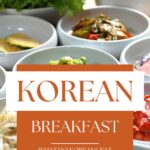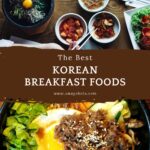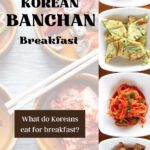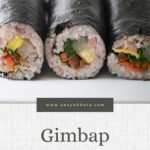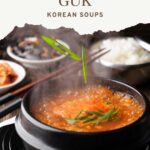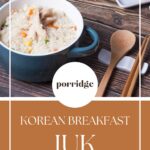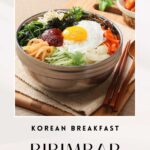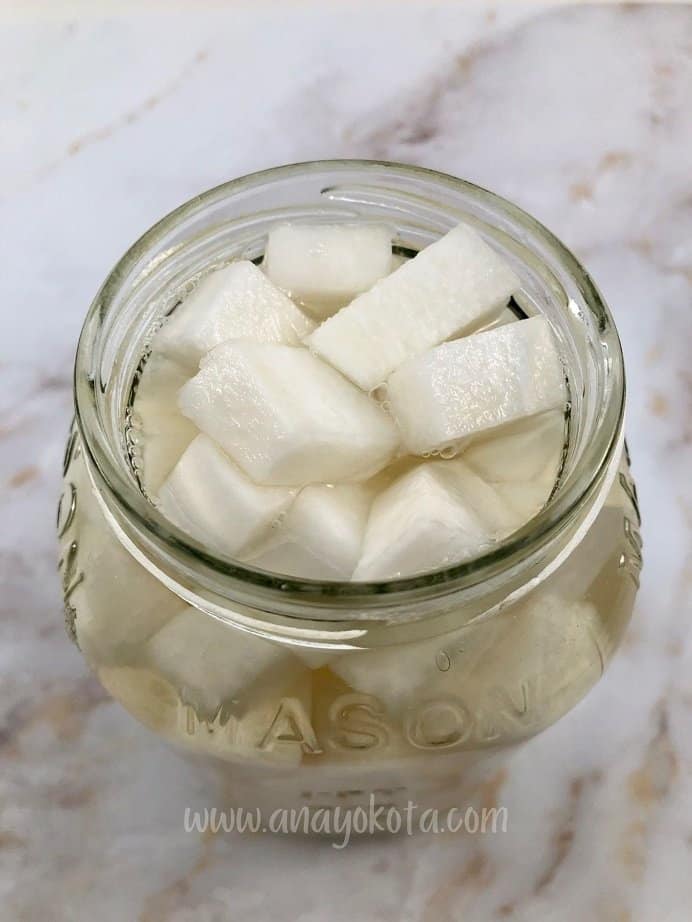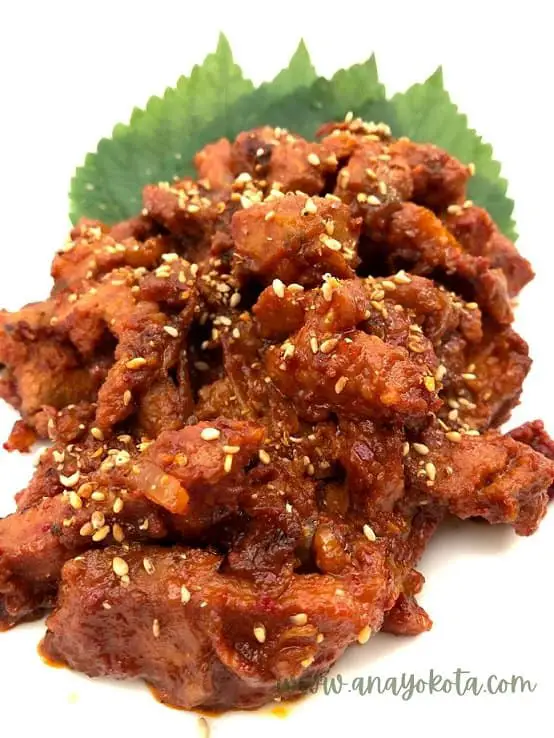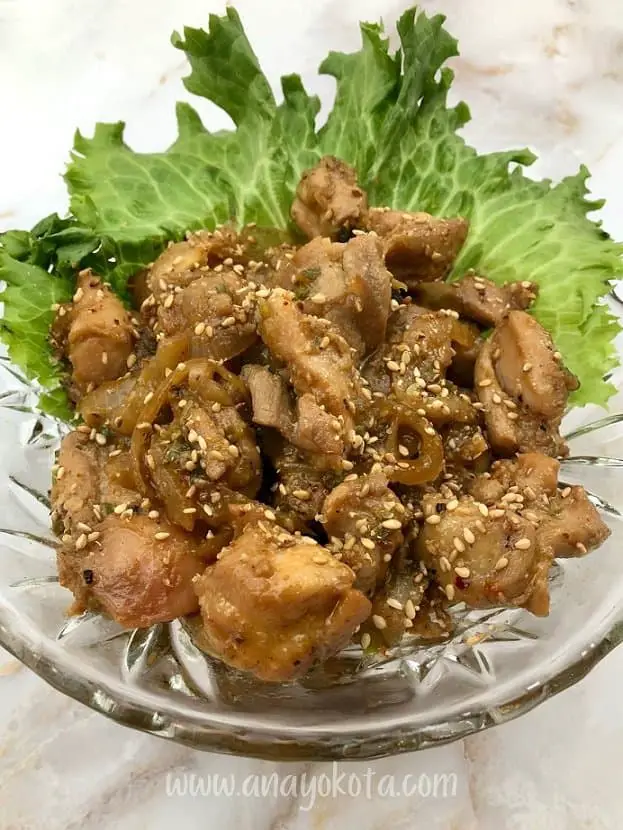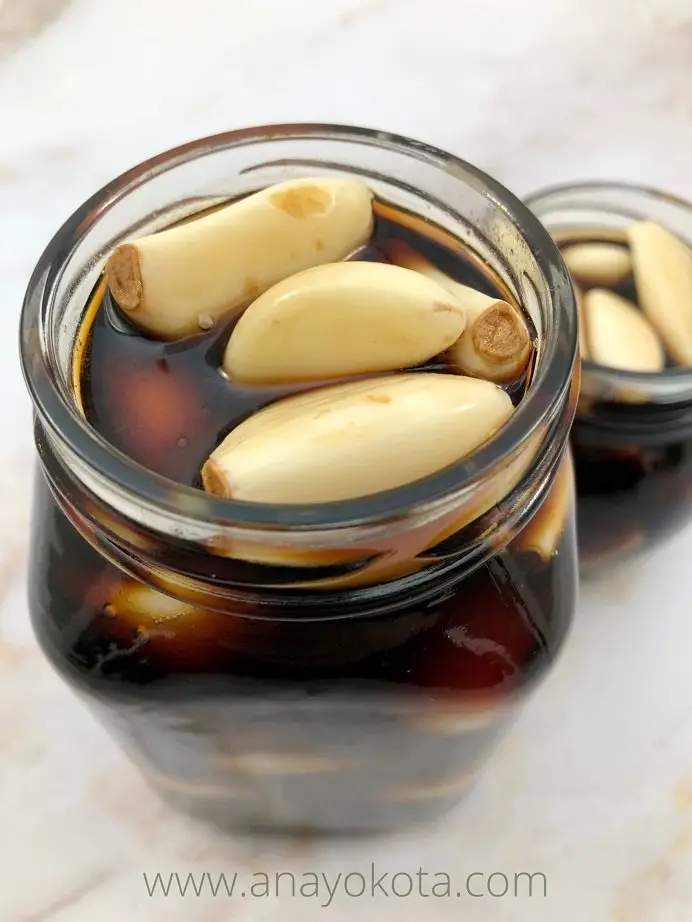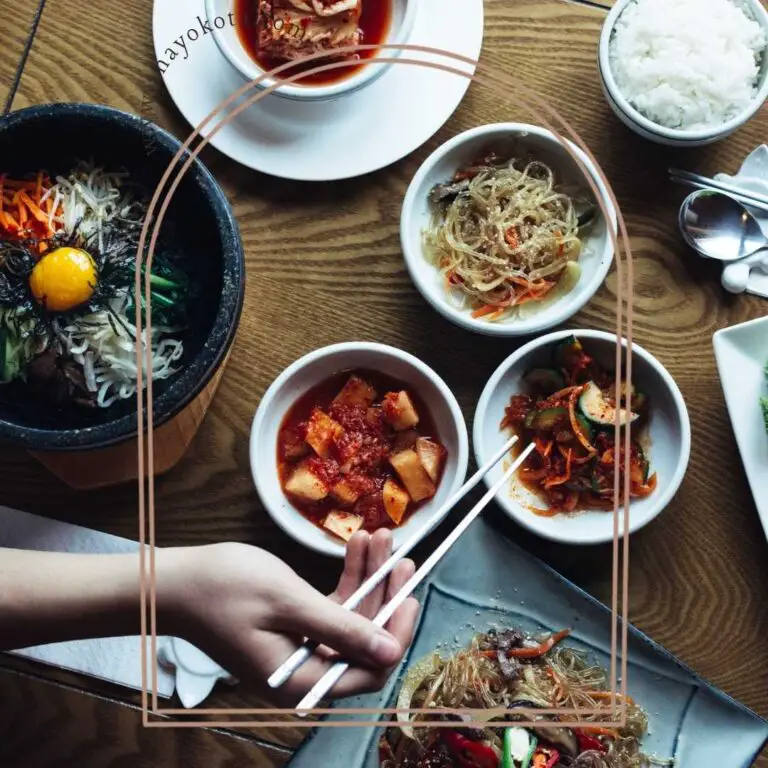This post may contain affiliate links. Please read my disclosure policy for more info.
Discover the best Korean breakfast foods to help you start your morning. Korean breakfast foods are not only delicious but a great way to add nutrition to your Asian diet. Continue to read to find Korean breakfast recipes today!
What do Koreans eat for breakfast? Koreans love their food — especially your typical Korean breakfast. It is not only an important meal to fuel the day, it is an opportunity to enjoy a delicious meal. As a matter of fact, many Koreans will eat breakfast for lunch and dinner.
Since many Korean breakfasts include a lot of vegetables, I find it a great way to eat a Korean breakfast for weight loss. Koreans have been eating breakfast for centuries, and they know what’s good and healthy.
How do you say, “breakfast” in Korean? Breakfast in Korean is 아침 밥 (achim bab) or 아침식사 (achim shiksa).
It is important to mention that many traditional Korean breakfast options will have rice. Rice is the staple food of Korea and is eaten at every meal, including breakfast. Korean rice is short-grain and sticky, and it is often cooked in a rice cooker to ensure that it comes out perfectly cooked every time.
But you can always swap white rice with a healthier version of rice. Many Koreans will upgrade their rice and add nutritional ingredients such as lentils, beans, and other types of rice for a healthier option called japgokbap (Korean purple rice). Hence, in most options below, it will be understood that some type of rice is always on the table.
Though Korean breakfast has changed a lot over the years adopting many western traditions (such as Korean breakfast sandwich or Korean street toast), I will focus on more traditional Korean breakfast food items in this article.
If you would like to know how to make any of these Korean breakfast ideas, please let me know in the comment section. Without further ado, here are ten of the most popular breakfast items in Korea, and why they’re so good for you.
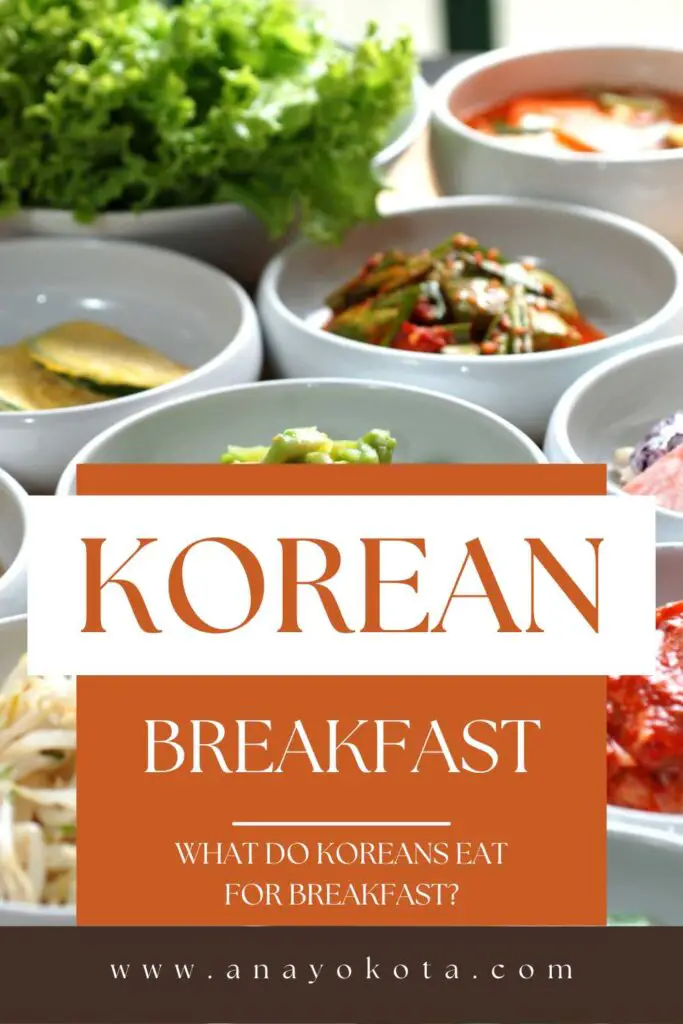
Banchan (Side Dishes)
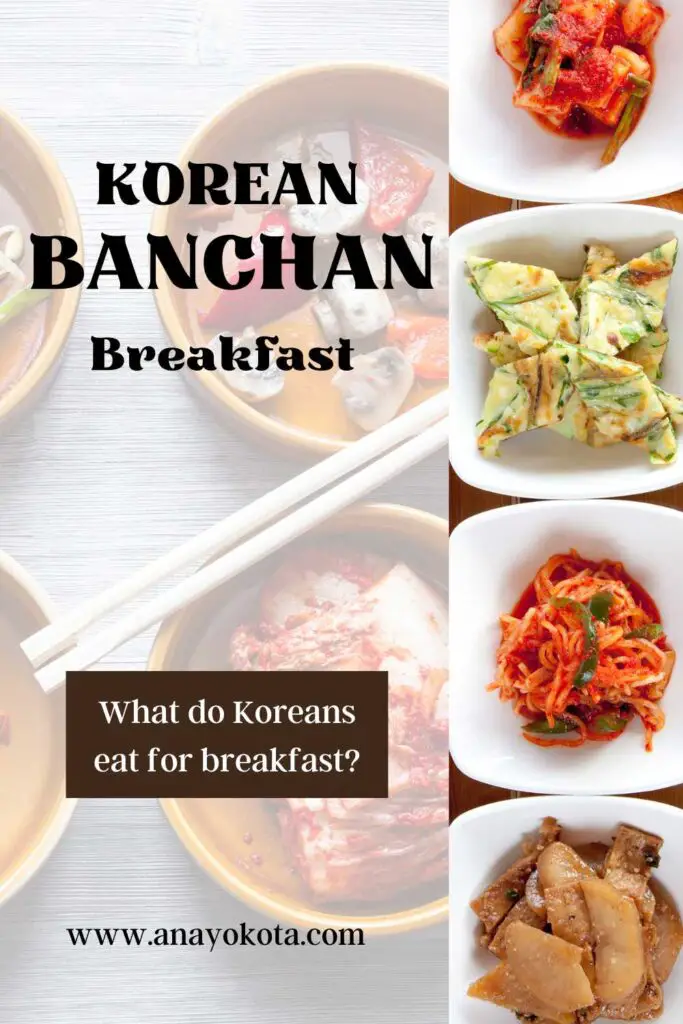
In almost every Korean traditional breakfast, there will be side dishes along with rice. The types of side dishes will vary depending on what is in season or what the family likes, but there are some that are more commonly served than others.
Some of the most popular Korean side dishes eat for breakfast are:
- Kimchi: there are over 200 different types of kimchi, which is typically marinated and fermented napa cabbage. Kimchi is an essential pillar in Korean cuisine and can be seen in various dishes such as kimchi fried rice or kimchi jjigae. Kimchi is packed with nutrients and has numerous health benefits, such as rich in vitamins A, B, and C, as well as being a probiotic food that is great for gut health. Make your breakfast a kimchi breakfast today!
- Korean fish cakes: Korean fish cakes are a popular breakfast item as they are healthy and filling. They are made with minced fish, vegetables, and starch. Fishcakes can be grilled, steamed, or pan-fried. I love adding extra vegetables because it adds great texture and nutrition.
- Dubu-kimchi (tofu kimchi): Just as the name says, this is literally tofu (sliced or whole) with your favorite kimchi. One of the most popular combinations is soft tofu with gently fried kimchi. It is warm and hearty as well as packed with protein.
- Oi-muchim (cucumber salad): Technically speaking, this is also a type of kimchi as it uses similar methods to make kimchi. Cucumbers are great for hydration and are low in calories but high in nutrients. This dish is perfect for a light breakfast (with less sodium) or as a side dish.
- Namul banchan: these are side dishes that primarily use leafy vegetables such as spinach, watercress, and chrysanthemum leaves. These dishes are lightly seasoned with salt, garlic, sesame oil, and sometimes gochugaru (Korean chili flakes). These banchan are a great way to get your greens in for breakfast and are low in calories.
- Gyeran-jjim (egg casserole): gyeran-jjim is Korean steamed eggs that is made with eggs, vegetables, and sometimes seafood. These Korean breakfast eggs are a healthy and filling breakfast option that is also easy to make. Nutritionally, it is loaded with protein from the eggs and you can pack on the healthy veggies as you like such as green onions, carrots, and even diced broccoli.
- Pajeon (scallion pancake): pajeon is a savory pancake that is made with scallions, wheat flour, rice flour, and eggs. It can be served as a breakfast food or as a side dish. Pajeon is a popular street food in Korea and can be found at most markets. This is a great option especially during colder months when you would want something toasty and warm.
All of these side dishes are healthy and nutritious, and they offer a variety of flavors and textures that make them perfect for breakfast. There are literally hundreds of different types of Korean side dishes. However, I find that these are the most popular at a Korean breakfast table.
Gimbap (Kimbap)
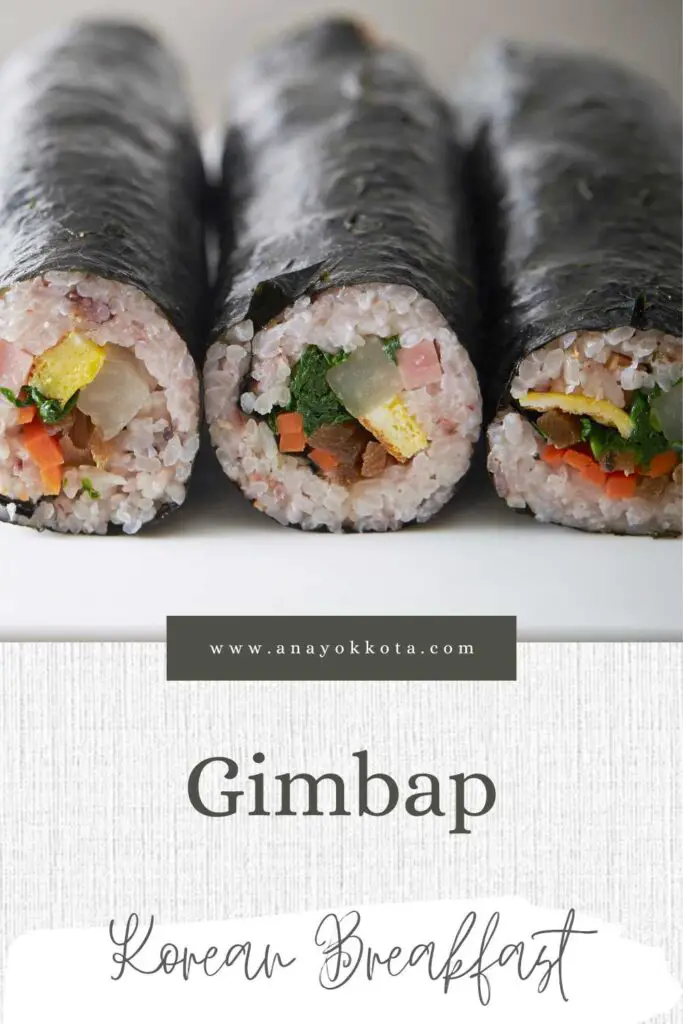
Gimbap is one of the most popular Korean breakfast foods. It is made with rice, seaweed, vegetables, and sometimes meat, all rolled up in a neat little package. It is similar to sushi (in the sense that it is rice with vegetables and protein), but without the fish.
Since gimbap can be so versatile, I often eat it for lunch and dinner or even as a great Korean brunch. Here are couple of my favorite types of gimbap when answering the question, “what do koreans eat for breakfast?”
- Triangle Gimbap: Triangle gimbap is regular gimbap conveniently packaged into a palm sized triangle. There is a savory ingredient in the middle wrapped with seasoned rice and packaged in seaweed. This is a great option especially if you are wanting either a light breakfast or something on the go. My favorite type of triangle gimbap is gochujang and gogi (Korean red chili pepper paste and ground meats). Triangle gimbap as a Korean breakfast is simple but very filling.
- Traditional Gimbap: The ingredients in one roll of traditional gimbap is packed with vegetables and loaded with nutrition. Typically, it will include spinach, carrots, gobo, eggs, daikon, and some type of meat such as ham or imitation crab.
Remember, Korean food is notorious for having multiple variations of one type of food. Much like how Americans can have different types of pancakes, Koreans have different types of gimbap recipes. If you go to a Korean breakfast restaurant, you’ll see many traditional foods served a little differently making it their own style.
Guk (Soups)
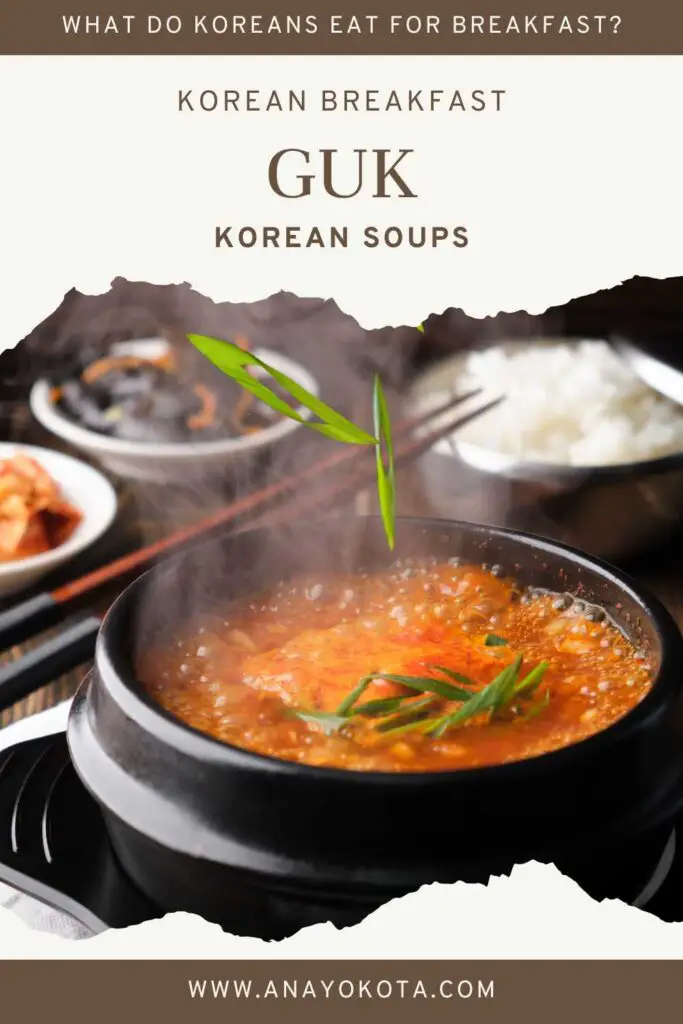
When it comes to soups, there are many different types of soups that Koreans love to eat with their breakfast. As a matter of fact, you can almost always find some type of Korean breakfast soup on the table when it comes to any Korean cuisine. To name them all would derail the purpose of this article as there are countless variations of Korean soups. So, here are the most popular foods Koreans eat for breakfast.
- Doenjang jjigae: this is a soybean paste stew that is made with vegetables and often tofu. It is savory and hearty, perfect for a winter breakfast. Doenjang jjigae is a great source of protein and fiber. This traditional Korean soup served for breakfast is a wonderful way to start the day because it is a one pot meal.
- Kimchi jjigae: kimchi jjigae is a stew made with kimchi, pork, and tofu. It is spicy, hearty, and savory- everything you need in a winter breakfast. Kimchi jjigae is also a great source of vitamins and minerals. This soup is perfect if you are looking for a little bit more of a protein packed breakfast.
- Miyuk guk (seaweed soup): Seaweed soup is my favorite Korean soup not only because it is packed with iron and various other super nutrients, but also because of its delicious warm flavors. Seaweed soup is often served at special occasions such as a baby’s first birthday, or weddings. However, it is also commonly served as part of a Korean breakfast.
All three of these soups are delicious and nutritious, making them perfect for a Korean breakfast. They offer different flavors and textures that make them unique and enjoyable.
Juk (porridge)
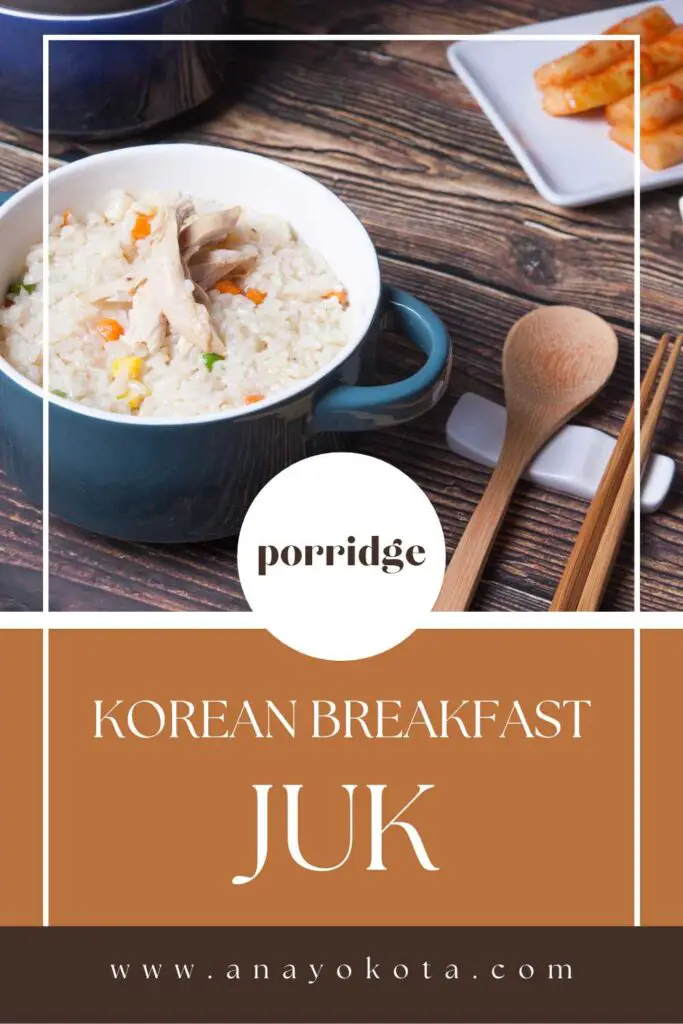
Juk (pronounced “jook”) is a type of porridge that is made with rice and water (or sometimes beef, chicken, seafood, or vegetable broth). If you are looking for easy Korean breakfast recipes, this is it. Juke is simply slow cooked porridge until the rice is broken down. There are restaurants and stores dedicated to serving juk as it is a very popular traditional Korean dish for breakfast (or any meal).
When discussing what do Koreans eat for breakfast, you will hear many Koreans mentioning juk. Here are the top most popular types of juk:
- Jombok juk (abalone porridge): Nutritious abalone simmered to perfection in juk. It is absolutely comforting and widely eaten to bring health back after being ill.
- Yachae juk (vegetable porridge): this is your traditional juk cooked with your favorite vegetables. Many Koreans will put carrots, onions, and celery.
- Buseut juk (mushroom porridge): This is a humble and simple juk but also one of the most popular breakfast foods in Korea. Packed with nutrition from the different types of mushrooms. Though it is a simple ingredient, many Koreans can spend up to $1000 just on exotic mushrooms that have healing properties.
- Hobak juk (kabocha pumpkin porridge): This is a sweet pumpkin porridge. Another popular juk that has Koreans begging for more as it reminds them of home. This can be served as dessert but certainly not a stranger as a main breakfast meal for those looking for something sweeter. Kabocha is rich in vitamins A, fiber and flavonoids (like beta-carotene) and best of all, it has a sweet nutty flavor that is low in calories. (SOURCE)
Bibimbap (Korean Mixed Rice)
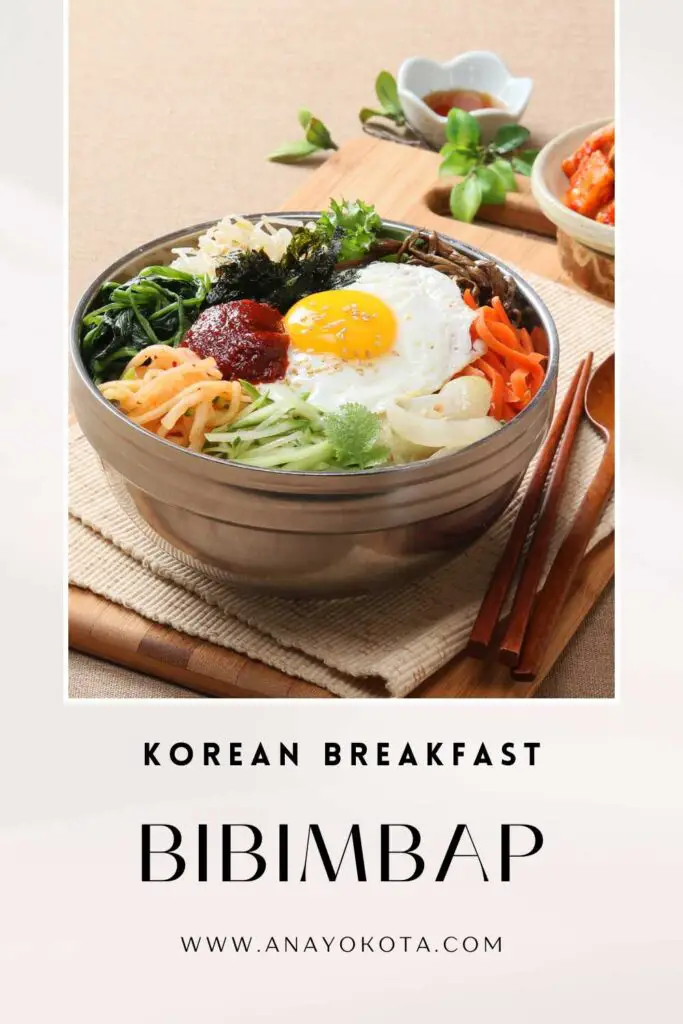
Raise your hand if you love one pot meals? Hand raised. Both hands raised. Bibimbap is one of the most popular Korean dishes, period. This Korean breakfast bowl is so easy because everything fits into a nice bow that is topped with an array of vegetables, meat, and often an egg. The word “bibimbap” literally means “mixed rice”. Bibimbap is typically served with gochujang (Korean red chili pepper paste) on the side.
This iconic one pot meal is convenient to put together as well as nutritious. It is a great way to use up any leftover vegetables you have in the fridge. And if you are looking for a meatless version, there are many vegetarian bibimbap recipes that are just as delicious. Here are just a few of the many different variations of bibimbap:
- Traditional bibimbap: As mentioned above, bibimbap is a one pot dish with rice and assorted vegetables. The vegetables typically include, seasoned spinach, carrots, bean sprouts, zucchini, cucumber, ground beef, egg, and red chili pepper paste. Mix it all together and you have a fabulous Korean breakfast.
- Dolsot bibimbap: dolsot means stone pot in Korean. It is essentially a traditional bibimbap in a very hot stoned pot. If you are looking for something warm in the morning, this will surely comfort your soul.
- Namul bibimbap: Another popular vegetarian bibimbap is this plant based dish. Described above in the banchan section, namul is a type of seasoned vegetable dish. Namul bibimbap includes namul banchan as the main topping, in addition to other vegetables and often times zucchini, carrots, and bean sprouts.
- Tuna bibimbap: You really can’t get any easier than tuna bibimbap. It is everything you would want in a traditional bibimbap plus the added protein from canned tuna. Korea has various flavors of canned tuna. Instead of adding red chili pepper paste to mix the bibimbap, I will add canned tuna that has been marinating in gochuchang (red chili pepper paste) and mix it all together. Absolutely my favorite.
If you would like to learn how to make various types of bibimbap such as tuna, kimchi, or even yukhoe (beef tar tar) bibimbap, please let me know in the comment section below. Your feedback truly helps me know what to focus on and help provide content that is fresh and enjoyable.
Korean Breakfast Conclusion
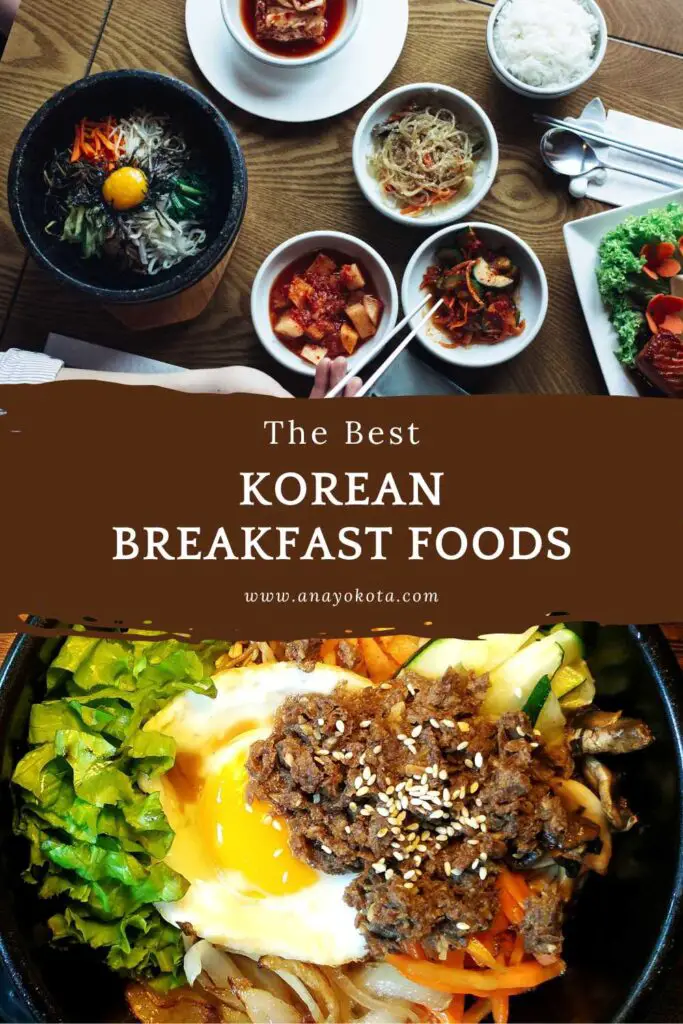
Now that I’ve answered your question of what do Koreans eat for breakfast, I hope you’ve prepared your appetite. Breakfast in South Korea is not only delicious but also nutritious. Packed with vitamins, minerals, and antioxidants, these breakfast foods will surely give you the energy you need to start your day. From hearty soups to savory rice dishes, there is something for everyone to enjoy. So what are you waiting for? Let’s get cooking!
For more content on Korean culture such as knowing what to say before and after a meal, check out my article on Korean table manners to learn more.

